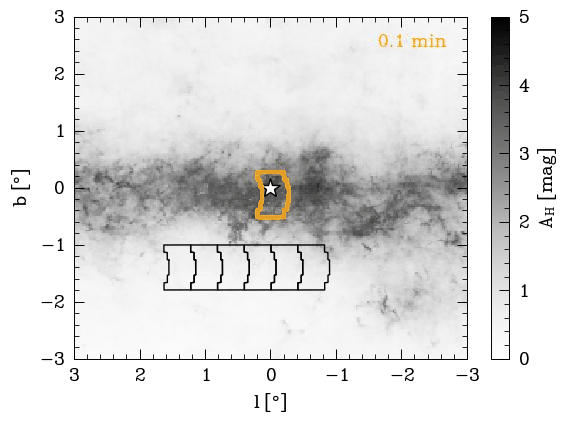RGES Design
As part of the Galactic Bulge Time Domain Survey (GBTDS), Roman will conduct the first ever dedicated gravitational microlensing survey from space. In order to maximize the number of microlensing events Roman will detect, the survey fields will be placed in the highly-crowded stellar region towards the galactic bulge.
There have been several provisional designs for the GBTDS observing strategy, a recap of these designs can be found in the following works:
- Spergel et al. 2015
- Akeson et al. 2019
- Penny et al. 2019
- GBTDS Definition Committee Report (Jan 2025)
- Roman Observations Time Allocation Committee Final Report and Recommendations (April 2025)
Pre-launch Observing Strategy (as of 2025)
The nominal GBTDS observing strategy will use the wide-field instrument (WFI) to image a total of six fields
(five ‘contiguous’ + one ‘GC’) for six 72-day seasons. Each exposure will be 67 seconds, and the imaging cadence for all fields (including the GC) will be 12.1 minutes.
Additionally, at the beginning and end of each season, Roman will obtain several exposures of each field in five additional passbands. This will enable very precise classification and stellar properties to be extracted for all sources in each field. Finally, as there will be a significant gap in time between season three and four of the GBTDS, there are Roman visits scheduled at lower cadence to perform ‘gap filling’ during this time (one image every 3-5 days).

Credit: R. Wilson (NASA GSFC).